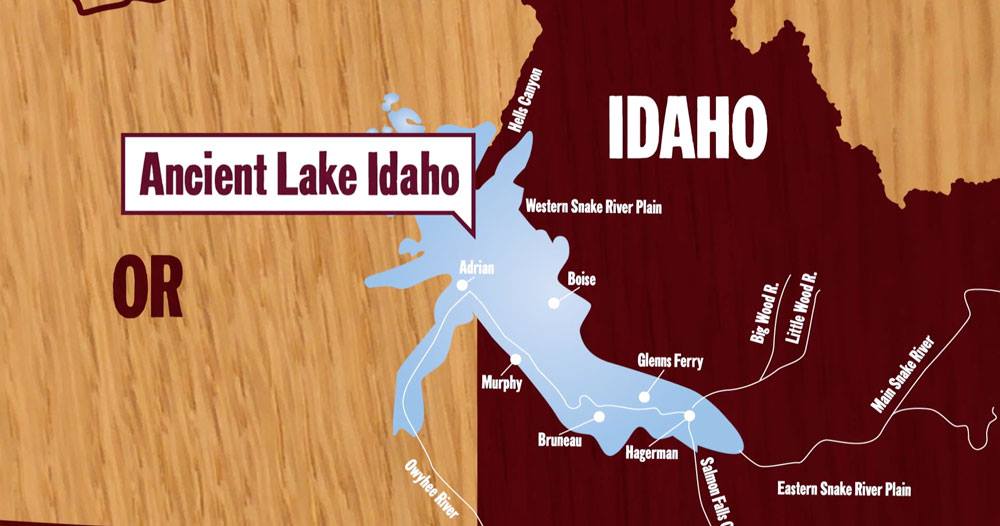And by “then” we mean somewhere around 2-9 million years ago. Yes, that’s pretty standard if you want to think about the terms of grapes and terroir. Well, consider it “soil construction” of sorts. No volcano that exploded last year (or in the last 1,000 years) is laying ground for modern wine production. It honestly takes millions of years.
And no one plants a vineyard that produces quality wines in under a decade…so….
Time and patience, we believe we’ve preached that here before in other context, but it’s still words to live by. And Idaho wine history is proof of that, here and now.
So we begin somewhere 2-9 millions of years ago with the formation of prehistoric Lake Idaho, ultimately a 200-mile lake. From this point forward, plate tectonics occurs, volcanic activity, a large meteor impact happens not too far south (on a global scale), the entire eradication of untold species unfolds, and in the aftermath the rise of man begins, man’s desire to have a good time and eat bread (a.k.a. civilization) takes precedence, then countless wars and colonizations play out, ultimately culminating in this specific area with our next historical marker, so very long after Lake Idaho has dried up: 1864, Royal Muscadine experimental plantings have survived the winter and began producing grapes the following year, the first documentation of grape growing in the region, September 1865.
From 1865-1919 the Idaho wine industry continues to boom, that is, until the storied human-imposed disaster of prohibition.
In 1933, when the humans decide to get their heads on the right track again and dissolve prohibition, Idaho, like many other states, has a very slow restart. It was 2 years time, 1935, that the first winery opened in the state again, by Gregory Eaves, under the wittily-named ‘The Garden of Eaves’.
It would sadly take another 37 years until Idaho saw its second bonded winery, Chateau Juliaette. Again, a very slow start for the state after prohibition.
However, things began looking up about 4 years later, in 1976, when the state’s largest winery opened, Ste. Chapelle – still very active today, and possibly the most recognizable Idaho winery name and label to date.
In 1984 the Idaho Grape Growers and Wine Producers Commission was formed, helping to assist and establish continued growth for the growers and wine industry. By 1999, 656 acres had been planted across the western portion of the state, and by 2002, 11 wineries existed in the state with continued vineyard plantings occuring.
5 years later, 2007, the Snake River Valley AVA was officially established and federally recognized, covering more than 8,000 square miles, and becoming the first step to national recognition for the wines of Idaho. In 2008, a study concluded the economic impact of the ID wine industry was $73 million dollars.
In 2009, Governor Butch Otter declared June to be Idaho Wine Month. In 2010, Idaho boasted 43 wineries with 1200 acres planted, and by 2013 that number grew to 50 wineries with a $169 million dollar economic impact.
The Eagle Hills AVA was federally recognized in 2015 and granted AVA status, followed the next year by the establishment and recognition of the Lewis-Clark AVA, and in 2017 over 60 wineries had made the economic impact of $209 million dollars.
So, who’s ready for a glass of Idaho’s finest?

